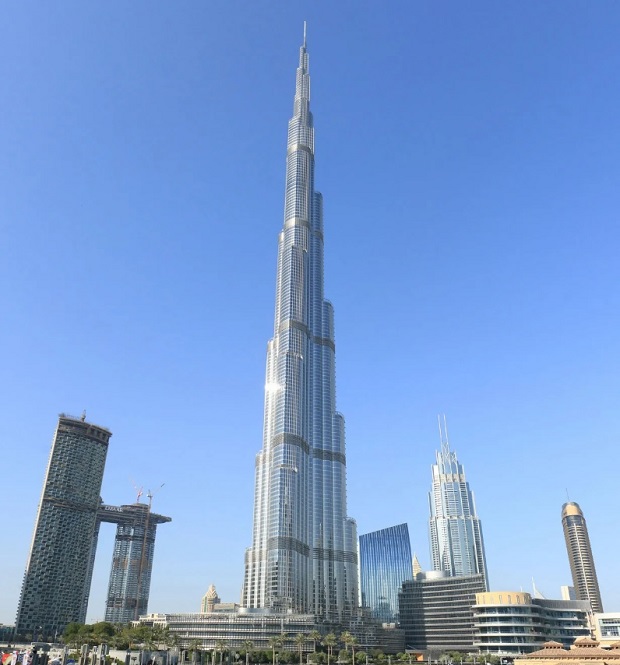Reaching New Heights: Top 10 Tallest Buildings in the World
Skyscrapers have become icons of modern engineering and architectural prowess, standing tall as testaments to human ambition and innovation. As we marvel at the ever-changing skylines of cities around the globe, it’s time to take a closer look at the top 10 tallest buildings that touch the clouds and define the modern skyline.

Burj Khalifa, Dubai, UAE (828 meters / 2,717 feet)
The Burj Khalifa holds the crown as the tallest building in the world. Completed in 2010, it pierces the skies of Dubai with its stunning height and awe-inspiring design. This magnificent structure boasts a blend of Islamic and contemporary architecture, offering an observation deck on the 148th floor, providing panoramic views of the city below.
Shanghai Tower, Shanghai, China (632 meters / 2,073 feet)
Rising majestically in the heart of Shanghai, the Shanghai Tower ranks second among the tallest buildings globally. Opened to the public in 2016, its unique spiral shape and sustainable features have earned it recognition as a pioneering skyscraper in green architecture.
Abraj Al-Bait Clock Tower, Mecca, Saudi Arabia (601 meters / 1,972 feet)
Overlooking the holy city of Mecca, the Abraj Al-Bait Clock Tower serves not only as a breathtaking architectural marvel but also as a significant religious landmark. Completed in 2012, it houses a luxury hotel and a massive clock face visible from miles away.
Ping An Finance Center, Shenzhen, China (599 meters / 1,965 feet)
The Ping An Finance Center is an epitome of modern design and technological prowess. Completed in 2017, it stands tall in the bustling city of Shenzhen, symbolizing China’s economic growth and global influence.
Lotte World Tower, Seoul, South Korea (555 meters / 1,823 feet)
Lotte World Tower graces the Seoul skyline with its graceful and modern architecture. Opened in 2017, this multipurpose skyscraper houses offices, a hotel, luxury residences, and an observation deck, offering breathtaking views of the South Korean capital.
One World Trade Center, New York City, USA (541 meters / 1,776 feet)
Built on the site of the former World Trade Center, One World Trade Center, also known as the Freedom Tower, is a symbol of resilience and hope. Completed in 2013, it honors the memory of the victims of the 9/11 attacks while showcasing cutting-edge design and sustainability features.
Guangzhou CTF Finance Centre, Guangzhou, China (530 meters / 1,739 feet)
Located in Guangzhou’s central business district, the CTF Finance Centre is a stunning addition to China’s impressive collection of skyscrapers. Completed in 2016, its sleek and elegant form reflects the city’s rapid development.
Tianjin CTF Finance Centre, Tianjin, China (530 meters / 1,739 feet)
Sharing the same height as its sibling in Guangzhou, the Tianjin CTF Finance Centre soars above the skyline of Tianjin, a bustling metropolis not far from Beijing. Its futuristic design and innovative engineering make it a must-see for architecture enthusiasts.
CITIC Tower, Beijing, China (528 meters / 1,732 feet)
Also known as China Zun, the CITIC Tower graces the skyline of Beijing with its distinctive tapering shape, inspired by an ancient Chinese ritual vessel. Completed in 2018, it symbolizes China’s historical roots combined with its modern aspirations.
TAIPEI 101, Taipei, Taiwan (508 meters / 1,667 feet)
For over a decade, TAIPEI 101 held the title of the world’s tallest building until it was surpassed by the Burj Khalifa. Nevertheless, it remains an iconic structure, blending traditional Asian motifs with advanced engineering solutions.
These magnificent skyscrapers are not only architectural marvels but also symbols of human determination and progress. As cities continue to grow and push the boundaries of design and construction, we can expect to see even more awe-inspiring structures reaching new heights in the years to come.



